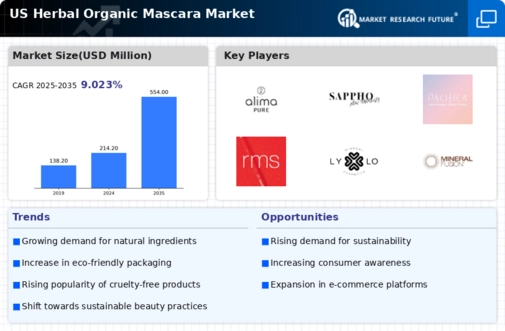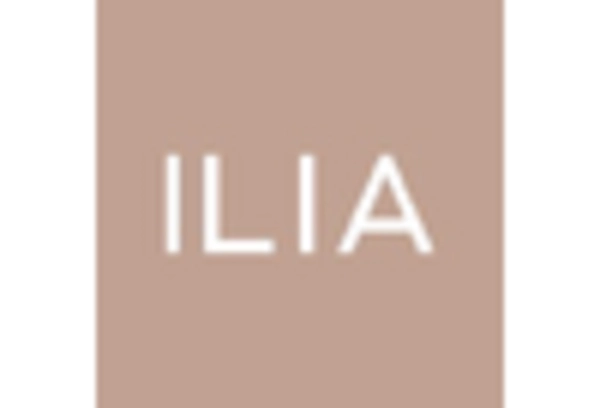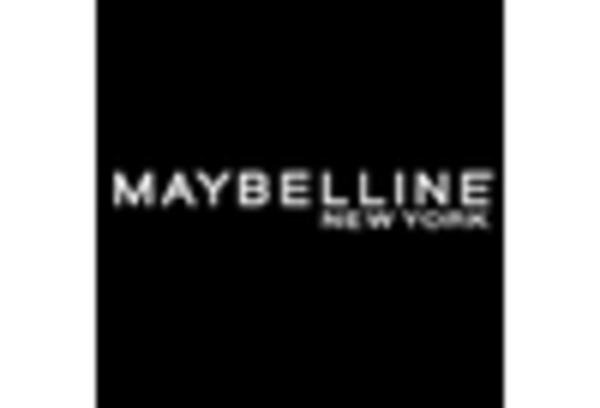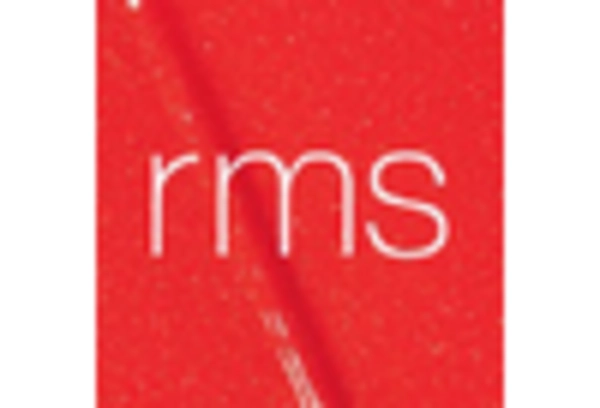Rise of Ethical Consumerism
The herbal organic-mascara market is witnessing a rise in ethical consumerism, where buyers are making purchasing decisions based on a brand's ethical practices. This includes considerations such as cruelty-free testing, fair trade sourcing, and transparency in ingredient sourcing. As consumers become more informed, they are increasingly supporting brands that align with their ethical beliefs. Data shows that approximately 60% of US consumers are more likely to purchase from brands that demonstrate social responsibility. This shift is likely to enhance the appeal of herbal organic-mascara products, as they often embody these ethical principles.
Expansion of E-commerce Platforms
The herbal organic-mascara market is experiencing a transformation due to the expansion of e-commerce platforms. Online shopping has become a preferred method for consumers seeking convenience and a wider selection of products. This trend is particularly relevant in the beauty sector, where consumers can easily compare products, read reviews, and access a variety of brands. Recent statistics indicate that e-commerce sales in the beauty industry are expected to account for over 30% of total sales by 2026. This shift towards online retail is likely to facilitate the growth of the herbal organic-mascara market, as brands leverage digital channels to reach a broader audience.
Growing Demand for Natural Ingredients
The herbal organic-mascara market is experiencing a notable surge in demand for products that utilize natural ingredients. Consumers are increasingly aware of the potential harmful effects of synthetic chemicals found in traditional cosmetics. This shift towards natural formulations is driven by a desire for safer, non-toxic beauty products. According to recent data, the market for natural cosmetics in the US is projected to grow at a CAGR of approximately 8% over the next five years. This trend indicates a strong preference for herbal organic-mascara products that align with consumers' health and wellness values, thereby propelling the market forward.
Influence of Health and Wellness Trends
The herbal organic-mascara market is benefiting from the broader health and wellness movement that has gained traction in recent years. Consumers are increasingly seeking products that not only enhance their beauty but also contribute positively to their overall well-being. This trend is particularly evident among younger demographics, who prioritize holistic health and are more inclined to choose cosmetics that are free from harmful additives. Market Research Future suggests that the health and wellness sector is expected to reach a valuation of $4 trillion by 2026, indicating a robust market environment for herbal organic-mascara products that align with these values.
Increased Awareness of Environmental Impact
The herbal organic-mascara market is significantly influenced by the rising awareness of environmental issues among consumers. As individuals become more conscious of their ecological footprint, they are gravitating towards products that are sustainably sourced and produced. This awareness is reflected in the growing preference for brands that prioritize eco-friendly practices, such as using biodegradable packaging and ethically sourced ingredients. Recent surveys indicate that nearly 70% of consumers in the US are willing to pay a premium for products that are environmentally friendly. This trend is likely to drive the growth of the herbal organic-mascara market as brands adapt to meet these consumer expectations.

















Leave a Comment